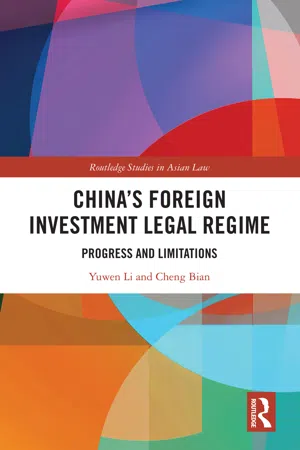
- 208 pages
- English
- ePUB (mobile friendly)
- Available on iOS & Android
About This Book
China has developed a piecemeal pattern of regulating foreign investment since the end of 1970s. The latest law is the Foreign Investment Law (FIL), which became effective on 1 January 2020. The groundbreaking new FIL is well acknowledged for its promises and affirmations pledged to investors, signalling China's eagerness to improve its investment environment and regain momentum for investment growth.
This book provides an updated and holistic understanding of the key features of the regulatory regime on foreign investment in China with critical analysis of laws and their implementation. It also examines sensitive and complex legal issues relevant to foreign investment beyond the 2020 FIL and new developments on foreign-related dispute settlement.
The book uses cases of success and failure to illustrate the nuances and differences between law and practice regarding foreign investment. Considering China's magnitude in the global economy and the weighty role of the regulatory system on foreign investment in China, this book is of great interest to a wide range of audience including academics in the field of investment law, legal practitioners, policymakers, and master's students in law and in management.
Frequently asked questions
1 The evolving characteristics of the foreign investment legal regime in China
1.1 The five periods of development
1.1.1 The initial stage from 1979 to 1991
Table of contents
- Cover
- Half-Title
- Series
- Title
- Copyright
- Contents
- List of figures
- List of tables
- Abbreviations
- Acknowledgements
- Introduction
- 1 The evolving characteristics of the foreign investment legal regime in China
- 2 Market access and national treatment
- 3 Foreign mergers and acquisitions of Chinese enterprises
- 4 National security review of foreign investment
- 5 Protection of foreign investors’ intellectual property
- 6 Dispute settlement: Foreign-related arbitration
- 7 Dispute settlement: Investor–state arbitration
- Index